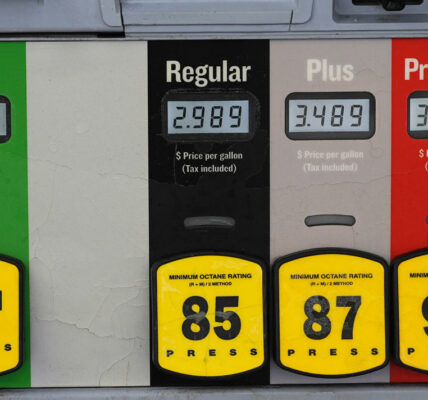
By Nicole Pollack
Casper Star-Tribune
Via- Wyoming News Exchange
CASPER —This year is shaping up to be the most normal in a while for the oil and gas industry. But with normalcy still a long way off, the Wyoming operators who have scrambled to keep pace with market volatility since the start of the pandemic aren’t sure what, exactly, 2023 will bring.
In 2022, Russia’s war in Ukraine drove the price of oil (and, later, natural gas) skyward. China’s COVID-19 lockdowns pushed prices back down. The U.S. oil and gas industry, hit hard when demand collapsed in 2020, struggled to rebound amid supply and labor shortages, while international production cutbacks ensured markets remained tight.
Gasoline, bottlenecked at refineries, broke price records at the pump.
By the end of the year, oil and gas markets fell back to parity with late 2021 — higher than the cheap pre-pandemic rates the Cowboy State had grown accustomed to, but nowhere near the mid-2022 extremes.
For now, at least, those prices are motivating Wyoming oil and gas companies to continue scaling up.
The price where oil production in Wyoming becomes affordable varies by company and is influenced by all sorts of individual decisions, said Pete Obermueller, president of the Petroleum Association of Wyoming.
But the break-even point is typically in the $60-per-barrel range, he said.
When the price surpasses $70 per barrel, most Wyoming oil and gas companies will be profitable. Higher still, for those companies, is even better.
U.S. oil benchmark West Texas Intermediate closed at $78.40 per barrel on Thursday, according to Insider — almost exactly where it stood during the last week of 2021, well below the over-$100 levels seen between March and July of 2022, but roughly $20 over pre-pandemic prices.
Price volatility wasn’t the only thing that clouded Wyoming companies’ production decisions in 2022, however.
“You add in the uncertainty caused by a federal government that would just assume we all go away and never come back,” Obermueller said. “It’s pretty hard to be super excited about leasing public lands when the federal government wants you to go away.”
With two Wyoming lease sales now in the works for the coming year, the tensions already simmering among industry, conservation groups and the federal government look unlikely to dissipate in 2023.
Disputes over the leasing of federal lands for oil and gas production have wound their way through the courts for years. A number of older lawsuits produced decisions with major implications for Wyoming last year. And several new ones were filed on both sides of the debate.
In March, a U.S. district judge in Montana invalidated 193 Wyoming oil and gas leases sold in 2017 and 2018 over concerns about sage grouse.
Less than three months later, the federal government agreed to redo its environmental review of more than 2,000 Wyoming leases, again, after another federal judge found them inadequate a second time.
From the oil and gas industry’s perspective, the never-ending legal battles make production on federal lands more frustrating and less attractive.
Environmental groups see them as a rare way to force federal land managers to protect vulnerable species and take climate change seriously.
“We still need very significant reforms, in terms of additional [well] bonding requirements, and mitigation of greenhouse gas emissions, and wildlife, and any number of things,” said Shannon Anderson, staff attorney for the Powder River Basin Resource Council.
Past litigation has made it clear, she said, that the Bureau of Land Management “does have a very important obligation to consider the environmental consequences of its decisions. It has to really evaluate all of the impacts, including climate change, and it needs to wrestle with all of that.”
Two lawsuits, together representing a dozen environmental groups, were filed immediately after the Biden administration finalized the lease sale it held in Wyoming in June, which remains the only federal lease sale to occur in the state since 2020.
The dearth of federal lease sales under the current administration, meanwhile, has spawned its own collection of lawsuits from the oil and gas industry and supporting states, centered mostly on the Mineral Leasing Act of 1920, an ambiguously worded law that, according to oil and gas interests, requires that lease sales occur every quarter.
Environmental groups and the Bureau of Land Management disagree.
In September, federal officials won the first case decided in Wyoming. But the ruling was narrow: The industry groups and the state of Wyoming sued before most of the lease sales were missed, and U.S. District Judge Scott W. Skavdahl didn’t include those subsequent sales in his decision.
So instead of appealing, in December, the state, the Petroleum Association of Wyoming and the Western Energy Alliance sued again. The outcome may not be known until well into — if not beyond — this year.
A federal law enacted in August 2022 changes the playing field for oil and gas leasing in the coming year and beyond.
The Inflation Reduction Act raises the costs of leasing to more closely resemble state lands’, including by increasing the minimum bid on new leases from $2 per acre to $10 per acre and the minimum royalty rate from 12.5% to 16.75%.
Environmental groups, which have pushed for higher prices for a long time, generally see the changes as beneficial but insufficient. Industry groups oppose them, especially in Wyoming, where about half of the land and closer to 70% of the minerals are owned by the federal government and many potential reservoirs remain untapped, and where exploratory drilling could become unworkable. Time will tell.
Already, the Bureau of Land Management has set the ball rolling on two upcoming lease sales planned for the second and third quarters of 2023.
“I’m eager to see how that plays out in this next-year lease sale,” Obermueller said. “What kind of leases we have, and who’s doing them, and that kind of thing will be interesting to watch.”
In addition to increasing expenses, the Inflation Reduction Act introduces incentives for companies to curb drilling-related emissions. And, in an unprecedented and controversial move that has so far proven unpopular in Wyoming, it requires that the Bureau of Land Management offer a certain number of acres for oil and gas leasing before new renewable energy projects can be approved.
As a result, “it does seem that they’ve resumed quarterly leasing,” Anderson said.
For environmental groups, many of which hoped the Biden administration would overhaul the leasing program and impose significant cutbacks, the back-to-back sales come as a disappointment.
“You can’t go too fast,” Anderson said. “Leasing does take time. And unfortunately, with the Inflation Reduction Act and this return to quarterly lease sales, it’s just going to bring up additional litigation and regulatory uncertainty.”
The agency will consider 209 tracts in Wyoming, encompassing about 251,000 acres, for its second-quarter sale, announced Oct. 6, and roughly another 96,000 acres, split into 115 tracts, for a third-quarter sale announced Dec. 20.
It’s currently accepting public comment for both sales.
In 2022, just 122 of the 459 Wyoming parcels nominated for leasing made it to auction. The majority were deferred due to environmental concerns, leaving environmental groups hopeful and the industry worried that the Bureau of Land Management could follow the same pattern at future sales.
And with Wyoming’s next federal lease sale scheduled to take place a full year after the last, Obermueller is still doubtful that quarterly sales will resume at all.
“I’ll believe that when I see it,” he said.
1 COMMENTS
Comments are closed.





The future is certain, its gonna fade away to non existence.
plan for the future wyoming.